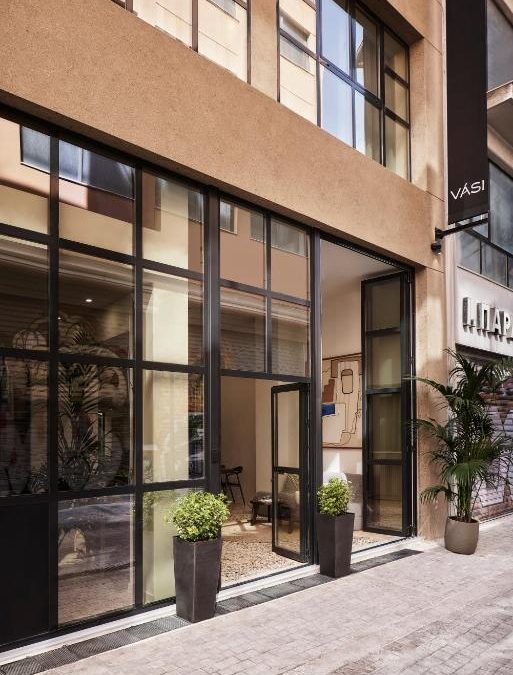
Can You Fly Your Drone Anywhere? Understanding Global Regulations
June 9, 2023Turning Buildings into Boutique Narratives
In boutique hospitality, choosing the right property is far more than a real estate decision—it’s the moment where architecture, brand identity, guest emotion, and return on investment converge. For Patrick Saada, Chairman of Bohopo, one of Europe’s most forward-thinking hospitality investment firms, this process blends rigor with creativity.
Drawing on years of experience across key European capitals, Patrick offers this comprehensive guide for those seeking not just a hotel, but a story worth staying in.
1. Start with the Right City, Not the Right Building
“The soul of a boutique hotel starts in the streets outside its doors.”
Before eyeing a single structure, begin by studying the city. Great boutique hotels are born in places that offer:
- Rich urban storytelling and a strong cultural identity
- Year-round relevance for travelers—not necessarily tourism, but consistent demand (business, institutional, academic, or cultural)
- Real estate markets with room for appreciation but still relatively accessible
- Predictable and supportive regulation that enables boutique-scale development
Cities like Brussels—a mix of European institutions and local charm—and Athens, with its combination of architectural redundancy and creative energy, are excellent examples.
2. Look for the “Quiet Prime” Urban Zones
“You want to be a whisper away from the main square, not shouting in the middle of it.”
In boutique hospitality, discretion is an asset. The best properties are often on charming side streets near key landmarks—off the tourist path, but close enough to walk.
These micro-locations offer:
- Lower entry prices
- More authentic architecture
- Less regulatory scrutiny and more design freedom
- A residential atmosphere that aligns with the values of privacy, experience, and local immersion
3. Focus on Underutilized or Forgotten Assets
Rather than targeting obvious hotel stock, Patrick encourages scouting for hidden potential. Some of the best-performing boutique properties were once:
- Old office buildings in outdated zones
- Residential buildings with inefficient floor plans
- Mixed-use propertiesare poorly adapted to modern needs
By repurposing these structures with a design-first approach, Bohopo often creates significant upside.
4. Prioritize Structural Flexibility and Layout Flow
“A beautiful façade means little if the bones don’t work.”
Beyond aesthetics, the internal structure must allow for seamless guest circulation, safety standards, and modern comfort.
Patrick recommends properties that allow:
- 20–50 rooms (the boutique sweet spot)
- Vertical flexibility for plumbing and HVAC systems
- Plenty of natural light
- Areas for social space: lobbies, breakfast areas, and, where possible, rooftops or courtyards
Always conduct pre-acquisition test-fit planning to ensure the space can evolve into a viable layout.
5. Understand Local Permitting and Regulatory Constraints
Every city in Europe has its development codes, heritage protections, and operational licenses. These factors can make or break a project.
Before making an offer:
- Investigate both zoning and heritage restrictions
- Understand whether hospitality use is permitted
- Assess how complex it will be to secure operational licenses (food service, late-night activity, elevators, etc.)
- Anticipate the timeline and cost of compliance
What seems like a great opportunity can quickly turn into a high-risk trap if red tape isn’t factored in early.
6. Analyze Downside Risk and Sensitivity
“Great investments aren’t just about upside—they’re about survivability.”
Patrick emphasizes that even in passionate ventures, you need to run conservative scenarios:
- What if RevPAR drops 20% in a down year?
- What if permits are delayed 12–18 months?
- How sensitive are you to cost overruns or regulatory changes?
Stress-testing each deal is crucial, especially in a boutique environment where scale doesn’t absorb shocks the way larger operations do.
7. Understand Boutique Advantages: It’s About Placement
One of the most powerful advantages of boutique hotels is their ability to go where larger players can’t.
“You can’t build a 150-room Hilton in Monastiraki, but we can create a 35-room design hotel that guests will remember.”
Boutique hotels are agile and non-intrusive, making them ideal for:
- Dense historic centers
- Heritage buildings
- Adaptive reuse without harming the urban fabric
This flexibility is a market advantage that smart investors should leverage.
8. Run the Numbers—With a Focus on RevPAR
In traditional hospitality, occupancy rates and ADR (Average Daily Rate) dominate decision-making. Patrick suggests a different approach:
- Focus on RevPAR (Revenue per Available Room), which reflects both rate and occupancy
- Create operational models that are lean and adaptive
- Built in premium positioning through design and narrative, which allows stronger direct bookings and longer stays, even if not high in volume
Boutique is about value density, not volume.
9. Design for Experience, Not Just Accommodation
The building you select should offer something special—whether it’s a rooftop with a view, a heritage staircase, or a courtyard that can be activated.
Think of these features as emotional real estate:
- Mini wellness areas
- Pop-up retail collaborations
- Garden cafés or art installations
These are not just amenities—they’re brand moments, marketing assets, and loyalty builders.
Final Thoughts from Patrick Saada
“A perfect boutique hotel starts with a great property, yes—but it ends with a vision. Real estate is the frame. The magic is what you paint inside it.”
By blending rigorous due diligence, a sensitivity to local context, and a clear-eyed view of both risk and reward, investors can transform forgotten buildings into boutique icons.

